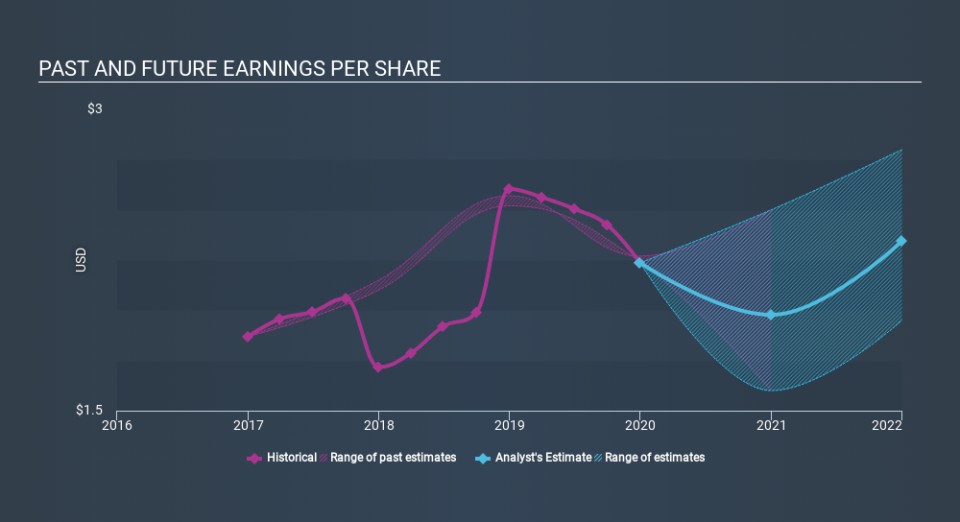Volatility 101: Should A. O. Smith (NYSE:AOS) Shares Have Dropped 27%?

This week we saw the A. O. Smith Corporation (NYSE:AOS) share price climb by 12%. But that doesn't change the reality of under-performance over the last twelve months. The cold reality is that the stock has dropped 27% in one year, under-performing the market.
Check out our latest analysis for A. O. Smith
While the efficient markets hypothesis continues to be taught by some, it has been proven that markets are over-reactive dynamic systems, and investors are not always rational. One imperfect but simple way to consider how the market perception of a company has shifted is to compare the change in the earnings per share (EPS) with the share price movement.
Unhappily, A. O. Smith had to report a 14% decline in EPS over the last year. This reduction in EPS is not as bad as the 27% share price fall. Unsurprisingly, given the lack of EPS growth, the market seems to be more cautious about the stock.
You can see below how EPS has changed over time (discover the exact values by clicking on the image).
It's probably worth noting that the CEO is paid less than the median at similar sized companies. But while CEO remuneration is always worth checking, the really important question is whether the company can grow earnings going forward. This free interactive report on A. O. Smith's earnings, revenue and cash flow is a great place to start, if you want to investigate the stock further.
What about the Total Shareholder Return (TSR)?
Investors should note that there's a difference between A. O. Smith's total shareholder return (TSR) and its share price change, which we've covered above. The TSR is a return calculation that accounts for the value of cash dividends (assuming that any dividend received was reinvested) and the calculated value of any discounted capital raisings and spin-offs. Dividends have been really beneficial for A. O. Smith shareholders, and that cash payout explains why its total shareholder loss of 25%, over the last year, isn't as bad as the share price return.
A Different Perspective
While the broader market lost about 6.0% in the twelve months, A. O. Smith shareholders did even worse, losing 25% (even including dividends) . However, it could simply be that the share price has been impacted by broader market jitters. It might be worth keeping an eye on the fundamentals, in case there's a good opportunity. On the bright side, long term shareholders have made money, with a gain of 5.7% per year over half a decade. If the fundamental data continues to indicate long term sustainable growth, the current sell-off could be an opportunity worth considering. It's always interesting to track share price performance over the longer term. But to understand A. O. Smith better, we need to consider many other factors. For example, we've discovered 1 warning sign for A. O. Smith that you should be aware of before investing here.
But note: A. O. Smith may not be the best stock to buy. So take a peek at this free list of interesting companies with past earnings growth (and further growth forecast).
Please note, the market returns quoted in this article reflect the market weighted average returns of stocks that currently trade on US exchanges.
If you spot an error that warrants correction, please contact the editor at editorial-team@simplywallst.com. This article by Simply Wall St is general in nature. It does not constitute a recommendation to buy or sell any stock, and does not take account of your objectives, or your financial situation. Simply Wall St has no position in the stocks mentioned.
We aim to bring you long-term focused research analysis driven by fundamental data. Note that our analysis may not factor in the latest price-sensitive company announcements or qualitative material. Thank you for reading.

 Yahoo News
Yahoo News 

